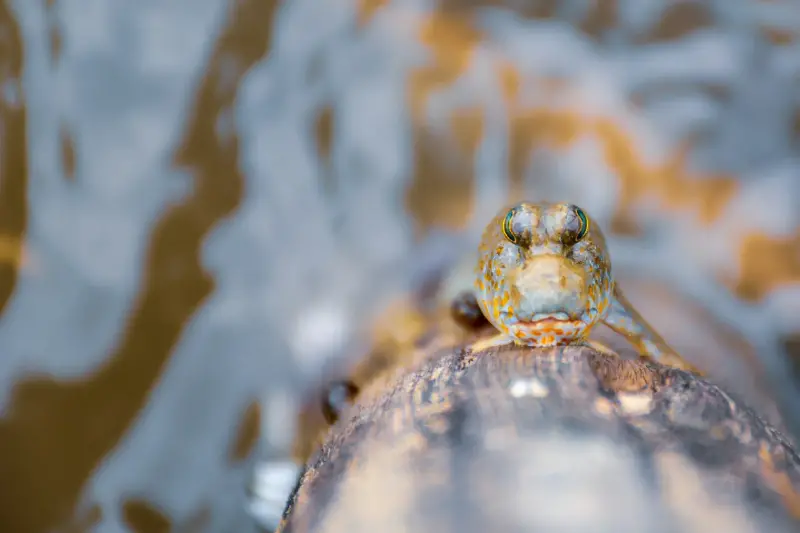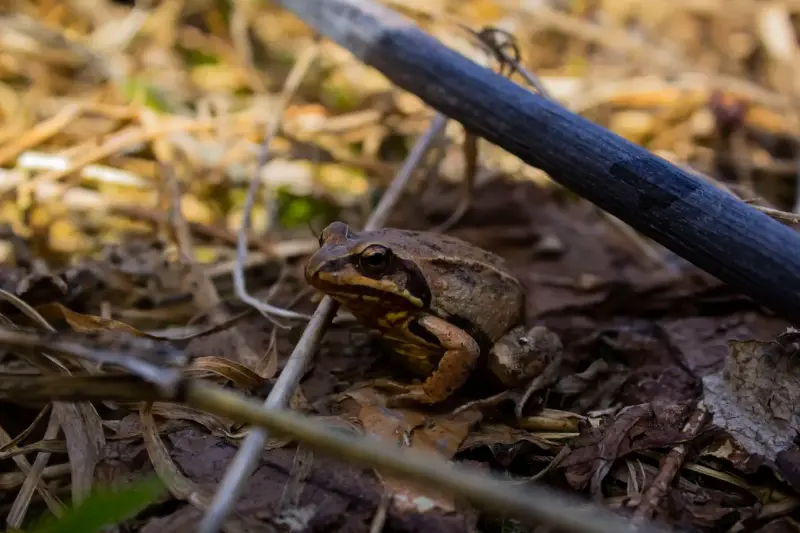
In the silent forests of North America, where winter’s grip is icy and unyielding, a fascinating drama unfolds each year. The star of this story? The unassuming wood frog—an amphibian with a life-saving superpower that seems straight out of science fiction. This small brownish frog, barely larger than a child’s thumb, doesn’t merely survive the harshest months. It cheats death by freezing itself solid.
The Ultimate Winter Survival Trick
Imagine the temperature plummeting below zero, lakes and streams encased in glistening ice. Many creatures flee, hibernate, or, sadly, succumb to the cold. Yet, the wood frog (Rana sylvatica) remains, often nestled beneath a blanket of leaf litter. And then something extraordinary happens.
As autumn winds grow colder, the wood frog’s body undergoes a chilling transformation. Its heart slows to a near stop, respiration ceases, and ice crystals begin forming—not around it, but inside it. Up to two-thirds of the frog’s body water turns to ice. Any human or mammal enduring this would face catastrophic organ rupture. But not the wood frog.
Frozen, Yet Not Broken: How Do They Do It?
The wood frog’s secret lies in chemistry. As temperatures fall, their liver quickly pumps out massive amounts of glucose into the bloodstream. This sugar acts like a biological antifreeze. Blood glucose levels skyrocket to more than 100 times those in normal frogs. The concentrated sugar protects the frog’s cells by preventing rupture and dehydration as ice forms in the spaces outside cells, locking harmful cold away from vital structures.
Here are the astonishing facts in simple terms:
- Ice encases the wood frog’s organs, muscles, and even eyes.
- Heartbeat and brain activity stop for days, even weeks.
- Vital organs survive because they’re “pickled” in thick, sugary syrup.
To witness this, researchers have been known to find wood frogs in midwinter, hard as stones, eyes glazed and unblinking—neither dead nor truly alive.
The Magic of Reawakening
Spring’s first warm rays ignite another miracle. The ice slowly melts, cells rehydrate, and glucose returns to normal. The very heart that stopped suddenly jolts back to life. Within a matter of hours, the wood frog hops away, ready to find a mate and continue the cycle.
Key highlights of the wood frog’s comeback:
- No lasting tissue damage, despite being frozen solid
- Rapid return to full mobility and behaviour upon thawing
- Complete reproductive capability even after months in stasis
Scientists are astounded by how quickly the frog’s organs spring back to action. It’s as if someone flips a switch from pause to play on the very process of life.

Why Should We Care—and What Can We Learn?
The frozen-alive saga of the wood frog isn’t just a quirk of nature. It’s a living blueprint for resilience—a source of inspiration for fields far outside biology. Researchers hope that understanding the frog’s freeze-thaw process could one day help humans:
- Manage organ transplants with less tissue damage
- Perfect techniques for cryopreserving human cells, eggs, or even entire organs
- Reveal new medical ways to combat hypothermia
It’s no wonder the wood frog has become the envy of both scientists and science fiction writers—teasing the boundaries between life, death, and something wondrous in between.
Nature hides countless stories, many stranger than our wildest imaginations. If a small frog can flirt with the boundaries of life and death each winter, what other marvels might be lurking in the world’s overlooked corners, waiting for us to freeze, and then awaken, our sense of wonder?
